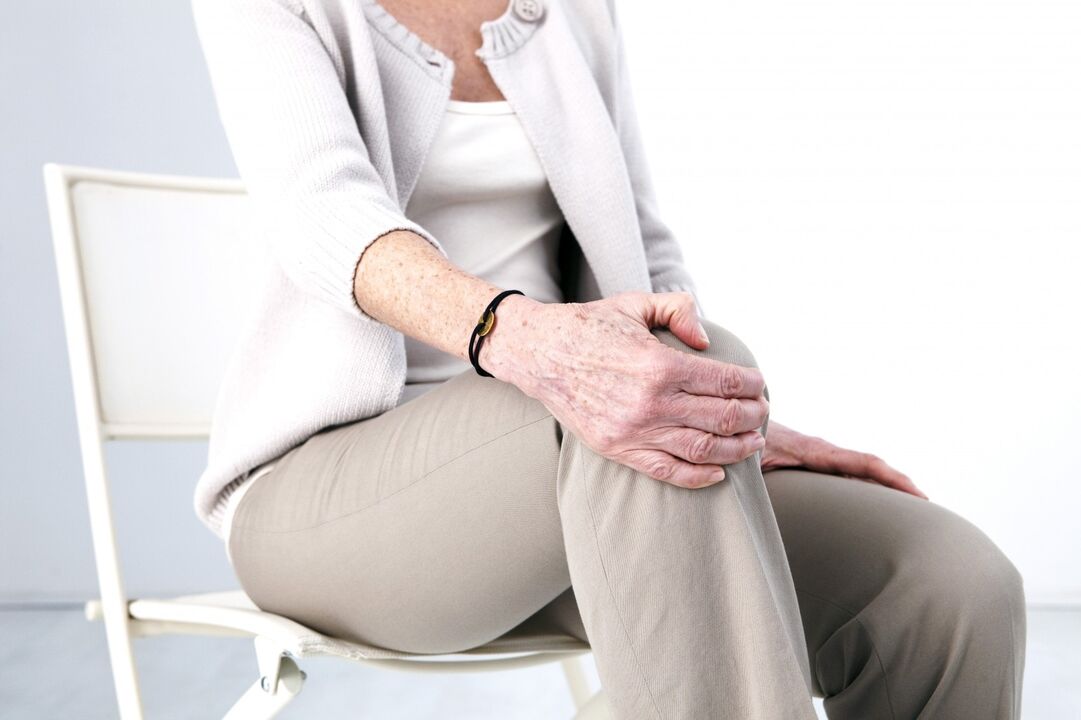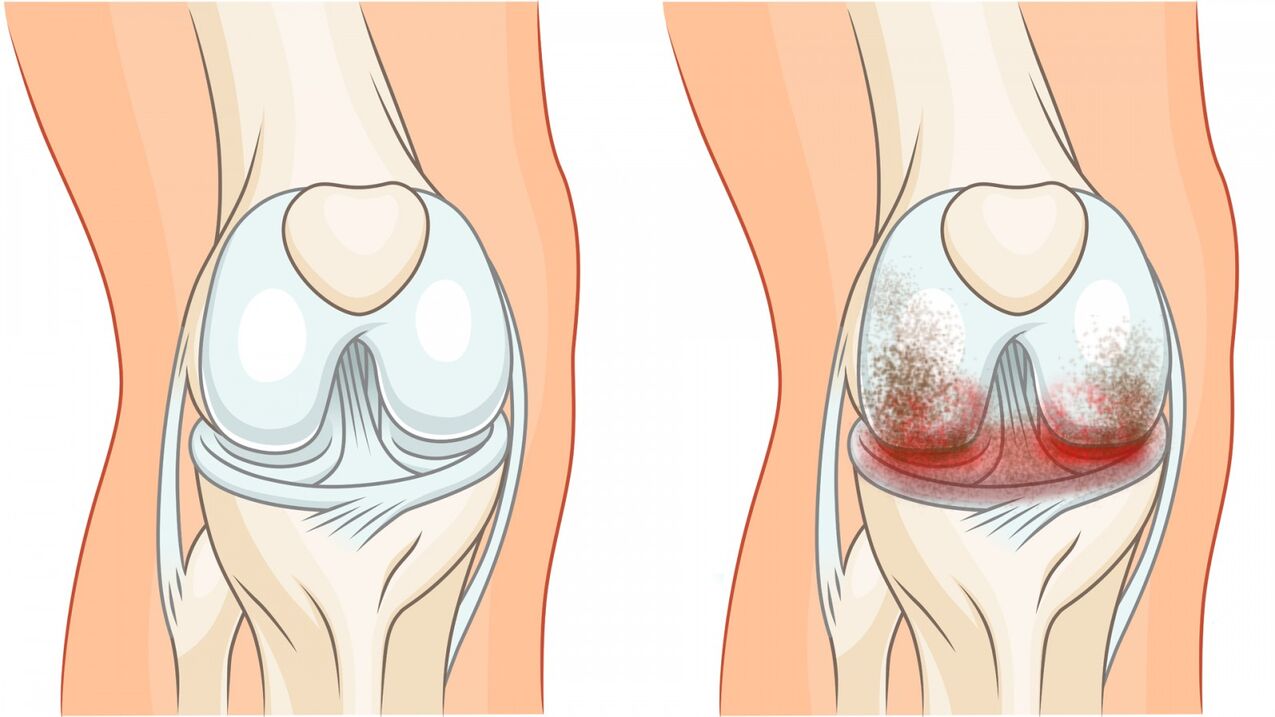Knee pain is a common complaint that you see a doctor for. What causes pain and how do you help yourself if it happens? There is no clear answer because knee joints can suffer from different types of injuries that occur for a number of reasons. One of these causes (and is very common) is initial arthrosis. Today we talk in detail about knee arthrosis: what are its causes, types, symptoms and signs, we talk about methods of treatment and prevention.
Types and causes of the disease
Arthrosis or gonarthrosis of the knee joint is a predominantly non-inflammatory lesion that eventually leads to the destruction of articular cartilage, deformity of the knee, and restriction of the range of motion within it. There are two main forms of the disease:
- primary - resulting from a congenital joint defect;
- secondary - due to other diseases or injuries.
The primary form begins to develop in childhood or adolescence and is caused by improper formation of joint surfaces or ligament equipment. While walking, such a joint is subjected to a disproportionate load relative to its abilities, causing degenerative changes in it.
The development of a secondary form of the pathology can result in:
- Injuries: fracture of the bones of the foot, bruising and displacement of the knee, accompanied by damage to the joint and connective tissue bone and cartilage. In this case, post-traumatic arthrosis of the knee joint develops.
- Meniscus removal operations as they lead to damage to the organic structure of the knee and rapid wear and tear.
- The disproportionate load on the feet that athletes often subject themselves to.
- Excessive obesity also provokes arthrosis as it leads to excessive pressure on the articular cartilage of the knee.
- Arthritis is inflammation of the joints. Long-term arthritis is accompanied by fluid formation in the joint cavity and can complicate arthrosis over time.
- Metabolic disorders that lead to the deposition of salts in the joint cavities.
- Other factors and diseases accompanied by long-term spasms of the muscles of the legs or blood vessels.
- Transmitted operations.
The pathological process can be unilateral or bilateral. As a result of trauma, unilateral arthrosis (such as the right knee) is highly likely to develop, and due to obesity - bilateral.

Typical symptoms
Arthrosis of the knee joint develops gradually, sometimes preceded by months and years of the initial period, when there are no obvious symptoms (such as severe pain and visible deformity), but from time to time a discomfort occurs in the knee.
Most often, overweight women over the age of 40 are ill and suffer from varicose veins as a particularly aggravating factor.
The development of gonarthrosis goes through several stages:
- The initial phase can last for months and sometimes years. A person is worried about intermittent pain in the knee, especially when taking the first steps after getting up in the morning and up and down the stairs.
- In the second stage, the pain becomes stronger and already occurs with every movement accompanied by a characteristic crackle. Fluid accumulation is possible in the joint cavity and you may notice an initial deformation during the test. The range of motion of the sore knee begins to decrease.
- The third stage is characterized by pain that does not go away even at rest. The discomfort is often worse before the weather changes. By this time, the joints had largely lost their function: the legs in the knee may hardly bend or do not bend to the end. The gait changes: it becomes a "stutterer" or on bent legs. The deformity of the knee is very pronounced: the legs are bent and O- or X-shaped.
Symptoms of post-traumatic arthrosis of the knee joint develop faster. In the background of the injury, there are pains in the region of the knee and swelling. Such pain constantly accompanies a person and increases after physical exertion. Gradually, a feeling of tightness and stiffness in the knee joins it. Sometimes with this form of the disease, it only takes a few months from the initial signs to irreversible changes.

Treatment of gonarthrosis
The extent of treatment depends on the stage of the disease and the severity of the lesion. But since the disease is chronic, the only thing that can be achieved is long-term remission (resting phases when manifestations of pathology are minimal or absent). However, if at an early stage it is possible to eliminate the cause of knee arthrosis (e. g. , weight loss), almost complete recovery is possible.
Goals for the treatment of gonarthrosis:
- eliminates pain
- if possible, recover destroyed cartilage and ligament equipment,
- increase the range of motion in the joint.
Treatment methods:
- drug therapy,
- massage and manual therapy,
- surgery,
- rehabilitation therapy (training therapy, physiotherapy and other methods).
Only the doctor can choose the right medicine - in no case prescribe them yourself. The main purpose of their activity is:
- Elimination of symptoms of knee arthrosis: relief of pain and inflammation. Appropriate medications are prescribed for this, including hormones that are injected into the joint cavity.
- Improving the blood supply to the affected area. It is provided with devices that relieve vascular spasms and relax muscles.
- Cartilage recovery. To do this, medications are prescribed that nourish and restore cartilage.
Hand punches and massages reduce pain, relax spasmodic muscles near the affected knee, increase range of motion, correct bone position, and improve blood circulation.
In the case of large-scale, irreversible lesions, knee arthrosis is treated in a radical way - the implantation of a prosthesis, ie a metal prosthesis, to replace the destroyed joint. So far, this is the only way to give a chance of full recovery, however, endoprostheses have a limited lifespan and need to be replaced thereafter. Because the costs of such operations are very high, this method of treatment is not yet widespread.
Rehabilitation therapy includes physiotherapy, kinesitherapy (exercises using special loads and simulators), physiotherapy, and treatment.
The purpose of orthopedic methods is to unravel a sore knee - these are canes, orthoses, etc. That make walking easier (if needed).
There are many folk recipes for various ointments and compresses based on herbs, medicinal bile and warming bandages made of natural wool. Basically, the effect of such methods is to relieve pain and eliminate the main symptoms.
Preventive measures
Prevention of knee inflammation involves several factors:
- A balanced diet: The diet should contain enough protein, vitamins and minerals.
- Fighting bad lifestyles and eliminating bad habits.
- Normalization of weight.
- Adequate physical activity.
- Prevention of injuries during sports and weight lifting.
The most important thing in identifying such a pathology, such as knee inflammation, is not to start the disease because its far-reaching stages lead to disability. But if all efforts are directed in time to treatment and prevention - until time runs out and symptoms are insignificant - there is a chance of a complete cure for the disease.


























